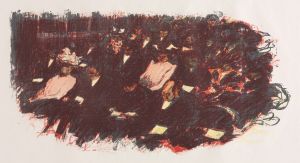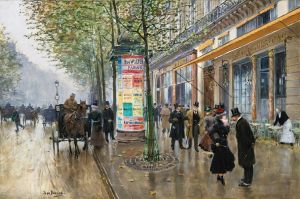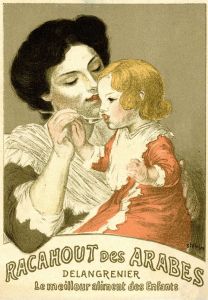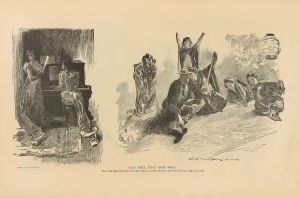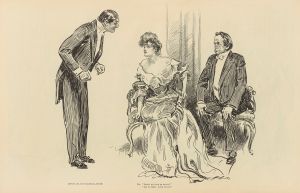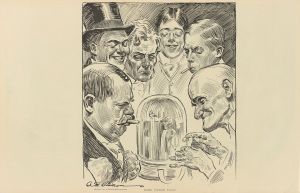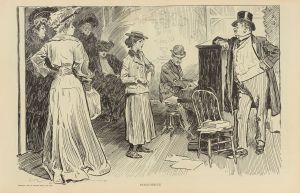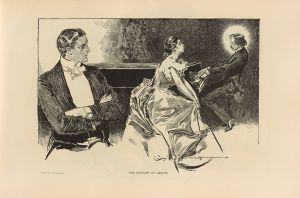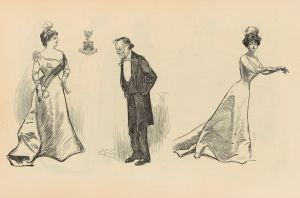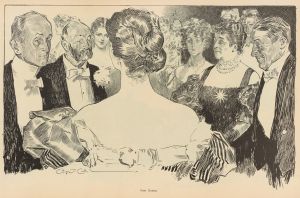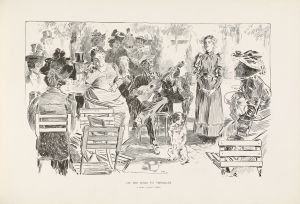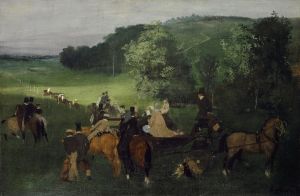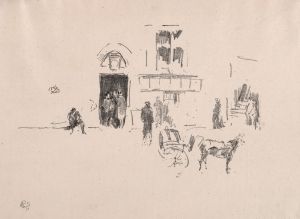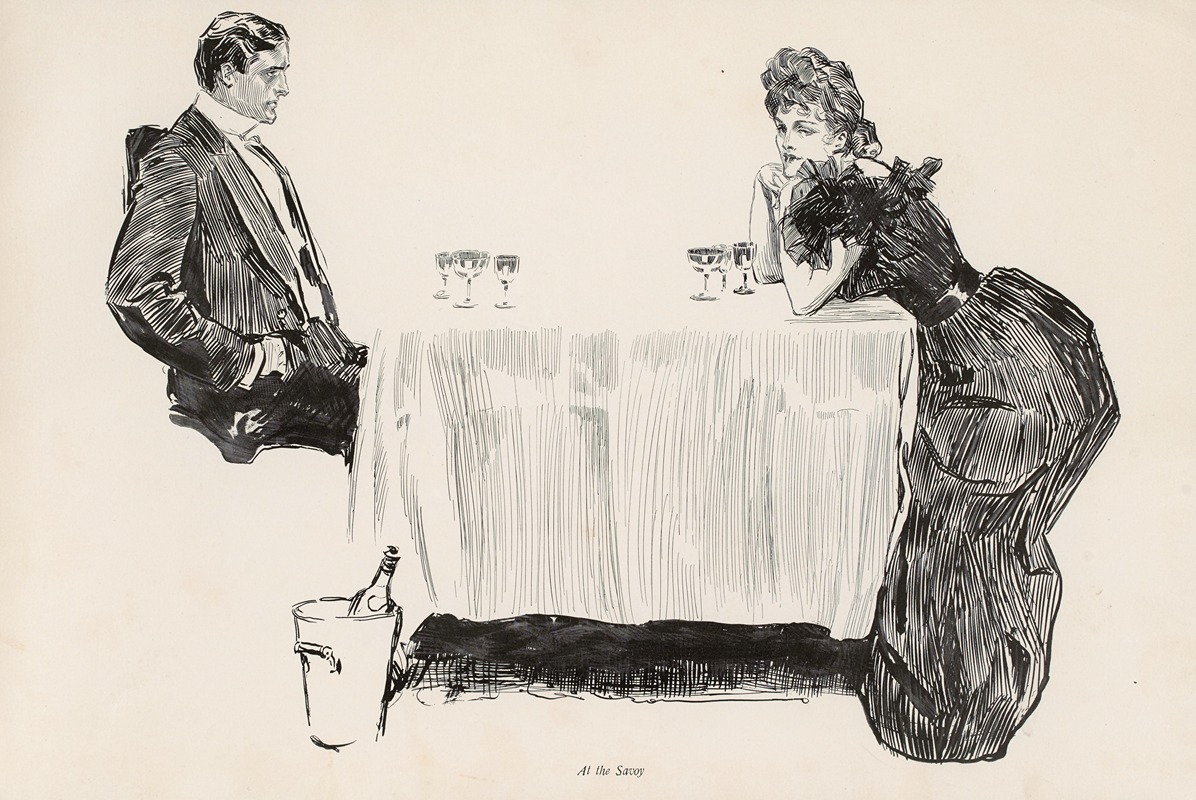
At the Savoy
A hand-painted replica of Charles Dana Gibson’s masterpiece At the Savoy, meticulously crafted by professional artists to capture the true essence of the original. Each piece is created with museum-quality canvas and rare mineral pigments, carefully painted by experienced artists with delicate brushstrokes and rich, layered colors to perfectly recreate the texture of the original artwork. Unlike machine-printed reproductions, this hand-painted version brings the painting to life, infused with the artist’s emotions and skill in every stroke. Whether for personal collection or home decoration, it instantly elevates the artistic atmosphere of any space.
Charles Dana Gibson was an influential American illustrator best known for creating the iconic "Gibson Girl," a representation of the idealized American woman at the turn of the 20th century. His work captured the spirit and social dynamics of his time, often with a humorous or satirical edge. One of his notable works is "At the Savoy," which exemplifies his keen eye for detail and social commentary.
"At the Savoy" is a black-and-white illustration that reflects Gibson's characteristic style, combining elegance with a touch of wit. The piece is set in the Savoy Hotel, a luxurious and fashionable establishment in London, known for its opulence and as a gathering place for the elite. The Savoy Hotel, opened in 1889, was one of the first luxury hotels in Britain, featuring electric lights, elevators, and en-suite bathrooms, making it a symbol of modernity and sophistication.
In this illustration, Gibson captures a scene that is both lively and refined, depicting well-dressed men and women engaged in conversation and leisure activities. The men are typically portrayed in formal evening attire, while the women are depicted as the quintessential "Gibson Girls," with their characteristic poise, confidence, and fashionable clothing. The "Gibson Girl" was a cultural icon of the time, representing a new standard of femininity that was independent, educated, and socially active.
Gibson's work often included subtle social commentary, and "At the Savoy" is no exception. The illustration may reflect the social dynamics and gender roles of the era, highlighting the interactions between men and women in a high-society setting. The Savoy Hotel itself was a symbol of the changing times, representing the intersection of tradition and modernity, which is echoed in the interactions and fashion of the figures depicted.
The composition of "At the Savoy" is carefully arranged to draw the viewer's eye across the scene, capturing the elegance and vibrancy of the setting. Gibson's use of line and shading adds depth and texture, bringing the characters and their environment to life. His attention to detail is evident in the intricate patterns of the clothing and the subtle expressions of the figures, which convey a sense of narrative and interaction.
Charles Dana Gibson's illustrations were widely published in magazines such as Life, Harper's Weekly, and Scribner's, reaching a broad audience and influencing popular culture. His work, including "At the Savoy," not only entertained but also offered a window into the social customs and aspirations of the early 20th century.
Overall, "At the Savoy" is a testament to Gibson's skill as an illustrator and his ability to capture the essence of an era. Through his art, he provided commentary on the societal norms and changes of his time, leaving a lasting impact on American illustration and popular culture.





